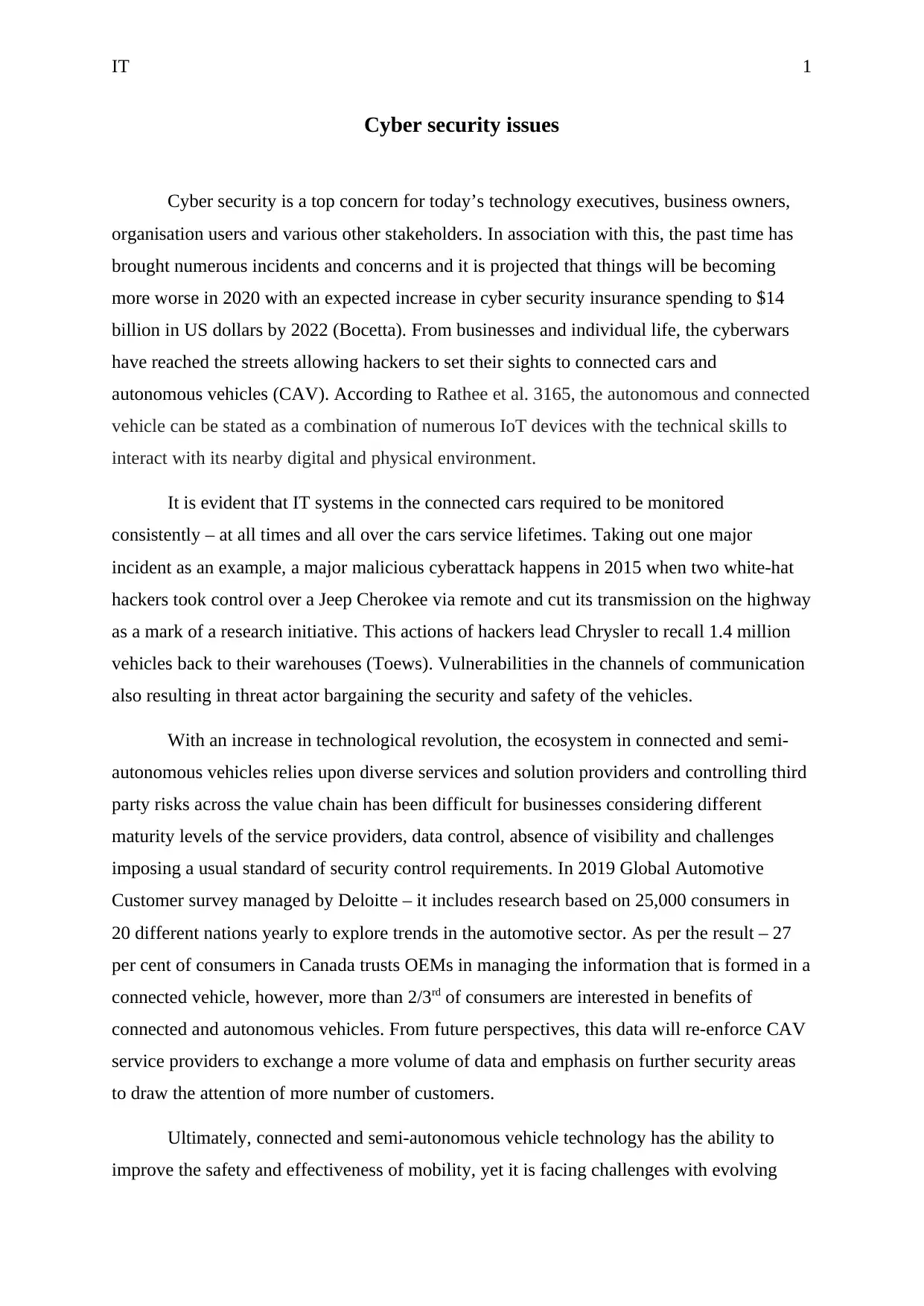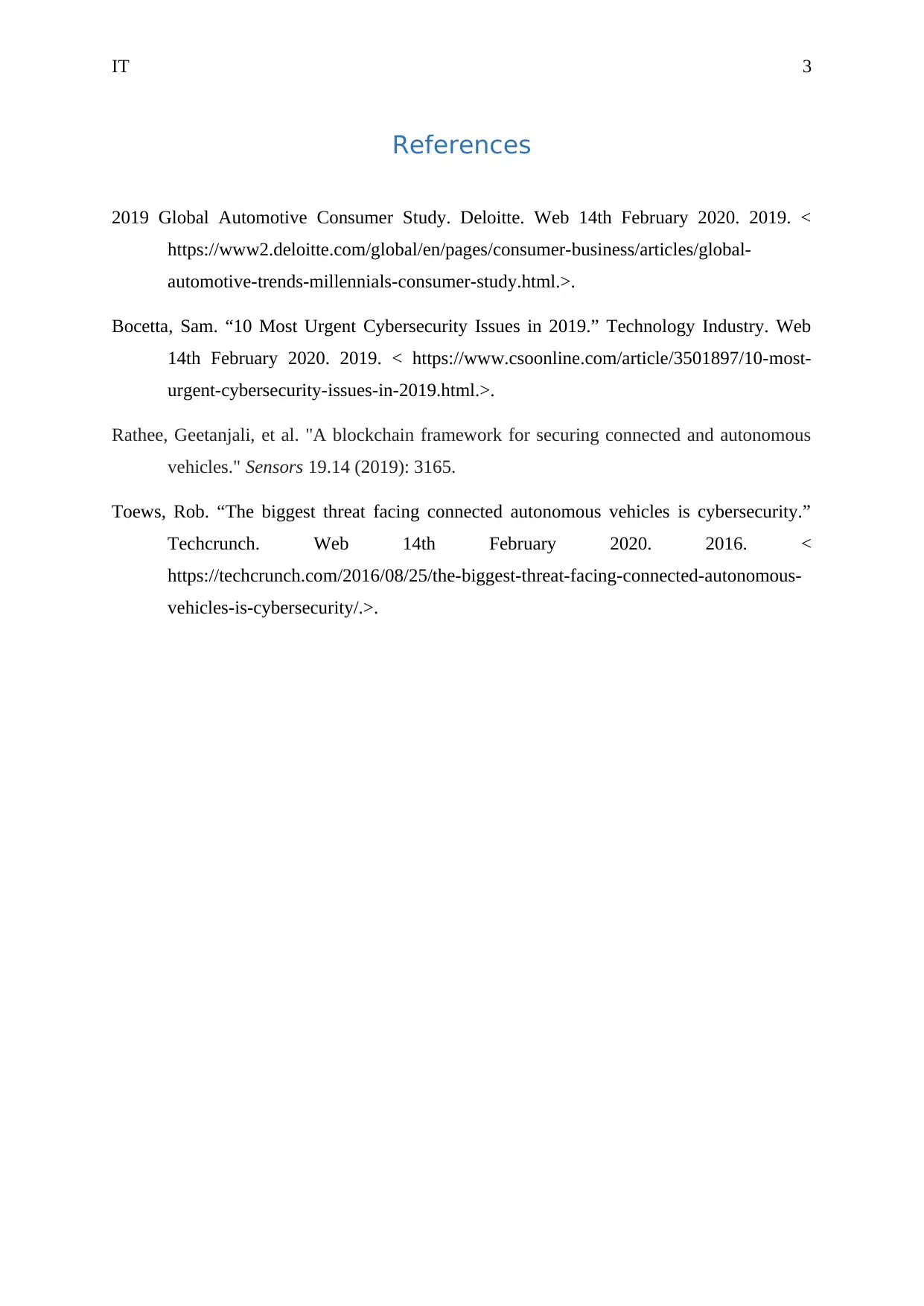Cybersecurity Challenges and Risks in Connected Car Technology Report
VerifiedAdded on 2022/08/12
|4
|641
|22
Report
AI Summary
This report delves into the critical cybersecurity concerns surrounding connected and autonomous vehicles (CAVs). It highlights the increasing vulnerability of these systems to cyberattacks, referencing real-world incidents such as the 2015 Jeep Cherokee hack. The report emphasizes the reliance of CAVs on interconnected IoT devices and the challenges in securing diverse service providers within the ecosystem. The report draws on data from the 2019 Global Automotive Customer survey by Deloitte, indicating consumer trust issues and the need for enhanced security measures. It underscores the importance of collaborative efforts among stakeholders, including governmental bodies like the Ontario government's AVIN program, to strengthen the cybersecurity framework. The report concludes by stressing the need for proactive measures to mitigate evolving cyber threats and ensure the safety and effectiveness of CAV technology.
1 out of 4











![[object Object]](/_next/static/media/star-bottom.7253800d.svg)